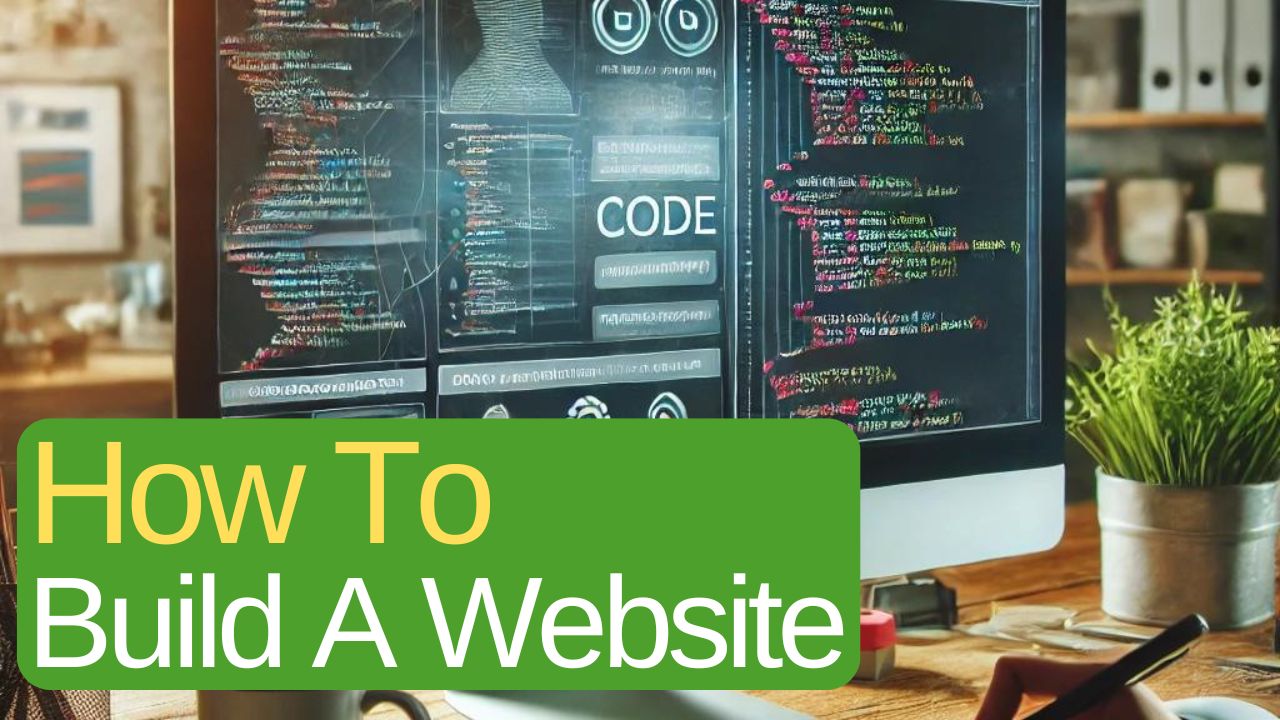Building a website can seem like a daunting task, but with the right guidance, anyone can create a functional and visually appealing site. Whether you’re a beginner or someone with a bit of experience, this guide will walk you through the essential steps on How To Build A Website and get your website up and running quickly

Choosing a Domain Name
The first step in how to build a website is choosing a domain name. This is the address where your site will live on the internet (e.g., www.yoursite.com). Here are some tips for selecting a memorable and relevant domain name:
- Keep it Short and Simple: A shorter name is easier to remember and type.
- Make it Relevant: Ensure the domain reflects the content or purpose of your website.
- Avoid Numbers and Hyphens: These can be confusing and are often mistyped.
- Check Availability: Use a domain registrar like GoDaddy or Namecheap to see if your desired domain is available.
Selecting a Web Hosting Provider
A web hosting provider is necessary to store your website’s files and make them accessible on the internet. Here are some popular hosting options:
- Shared Hosting: Affordable and beginner-friendly, but less control and slower speeds (e.g., Bluehost, HostGator).
- VPS Hosting: More control and faster than shared hosting, suitable for growing websites (e.g., InMotion, A2 Hosting).
- Dedicated Hosting: Complete control and highest performance, but also the most expensive (e.g., SiteGround, Liquid Web).
When choosing a hosting provider, consider factors such as uptime guarantees, customer support, and pricing.
Website Builders and CMS Platforms
Choosing the right website builder or content management system (CMS) is crucial for your site’s success. Here are some popular options:
- WordPress: Highly flexible and customizable, suitable for all types of websites.
- Wix: User-friendly with a drag-and-drop interface, ideal for beginners.
- Squarespace: Known for its beautiful templates and ease of use, great for creatives and small businesses.
Each platform has its pros and cons, so choose one that aligns with your needs and technical expertise.
Designing Your Website
Designing your website involves choosing themes, layouts, and customizing the site to match your brand. Here are some basics:
- Themes: Most builders offer free and premium themes. Choose one that fits your site’s purpose and aesthetic.
- Layouts: Organize your content in a way that is easy to navigate. Consider the placement of menus, headers, and footers.
- Customization: Use the customization options to adjust colors, fonts, and images to align with your brand identity.
Adding Content and How To Build A Website
Content is the heart of your website. Follow these best practices:
- Text: Write clear, concise, and engaging content. Use headings and bullet points for better readability.
- Images: Use high-quality images that are relevant to your content. Compress them to ensure faster loading times.
- Videos: Embed videos to enhance user engagement. Make sure they are optimized for web viewing.
SEO Basics on How To Build A Website
Search engine optimization (SEO) is essential for making your website visible on search engines. Here are some basic techniques:
- Keywords: Use relevant keywords throughout your content, including in headings and meta descriptions.
- Alt Text: Add descriptive alt text to your images.
- Internal Links: Link to other pages on your site to keep visitors engaged.
- Mobile Optimization: Ensure your website is mobile-friendly, as search engines prioritize mobile-optimized sites.
Testing and Launching Your Website
Before launching your website, it’s crucial to test its functionality. Here’s how:
- Check Links: Ensure all internal and external links work correctly.
- Test Forms: Make sure contact forms and other interactive elements function properly.
- Browser Compatibility: Verify that your site looks good on different browsers and devices.
- Loading Speed: Use tools like Google PageSpeed Insights to check your site’s loading speed and make necessary optimizations.
Once everything is in order, you can launch your website by connecting your domain to your hosting provider and making it live.
Maintaining and Updating Your Website
Keeping your website up-to-date and secure is vital for its success. Here are some tips:
- Regular Updates: Update your CMS, themes, and plugins to the latest versions to ensure security and functionality.
- Backup: Regularly back up your website to prevent data loss.
- Monitor Performance: Use analytics tools to monitor your site’s performance and make improvements as needed.
- Security: Implement security measures such as SSL certificates, firewalls, and regular scans for malware.
FAQ on How To Build A Website
How much does it cost to build a website?
The cost can vary widely depending on your choices. Domain registration and hosting can cost between $50 to $150 per year, while premium themes, plugins, or additional services can add to the cost.
Do I need coding skills to build a website?
No, many website builders like Wix and Squarespace are designed for beginners and don’t require coding skills. WordPress also offers many themes and plugins that simplify the process.
How long does it take to build a website?
The time required can range from a few hours to a few weeks, depending on the complexity of the site and your familiarity with the tools you’re using.
What are the best website builders for beginners?
Wix, Squarespace, and WordPress are all excellent choices for beginners, each offering a range of features and ease of use.
How can I improve my website’s SEO?
Focus on using relevant keywords, creating high-quality content, optimizing your images, and ensuring your site is mobile-friendly.
By following this comprehensive guide on how to build a website, you’ll be well on your way to creating a successful site that meets your goals and provides a great user experience. Happy building!













